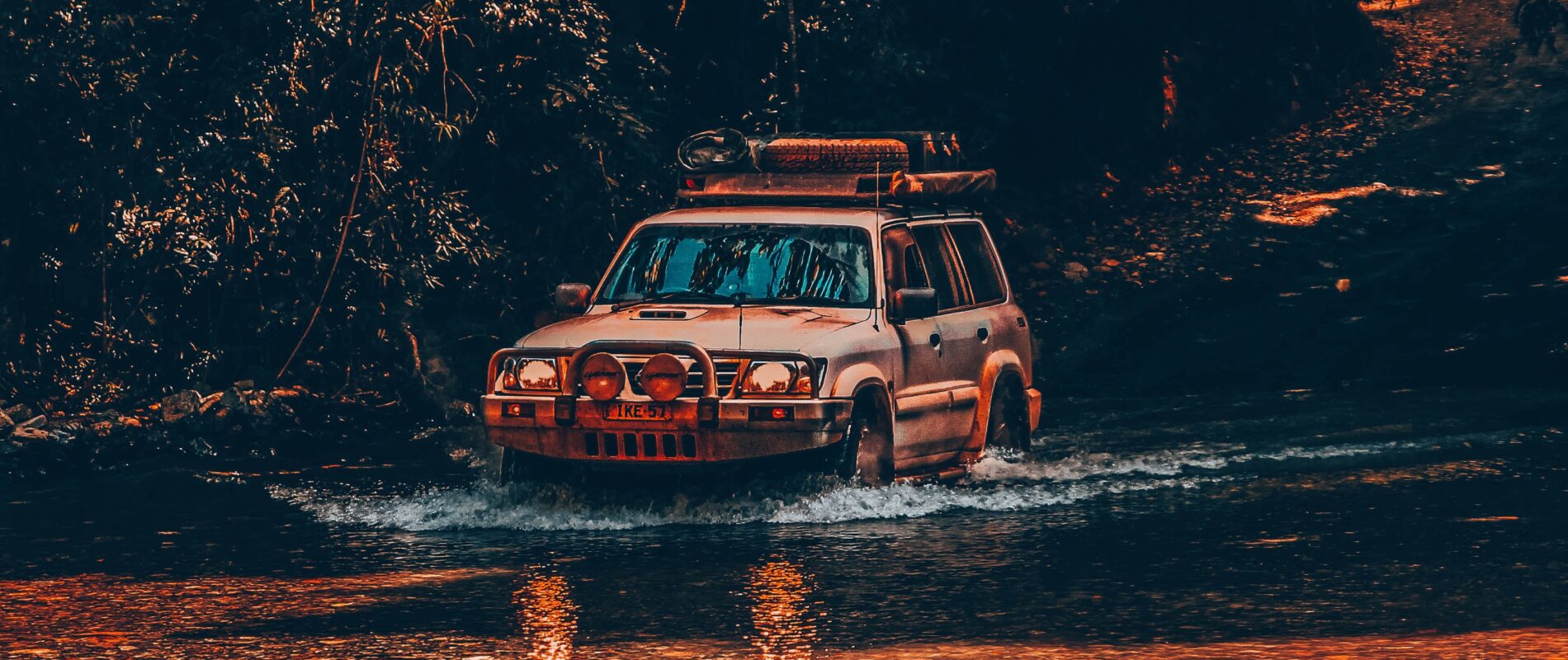Driving in Australia 101
Before you buy a car or van in Australia, make sure you’re up to speed on the rules of the road Down Under!
Stay on the left
In Australia (and New Zealand), they drive on the left side of the road. For readers from countries that drive on the right, this will take some getting used to. Be especially mindful in the early morning, later at night, or in rural areas, when there are few or no other cars on the road to remind you of this difference.
Automatic or manual transmission?
Most vehicles have automatic transmissions. If you’re used to manual transmission, don’t worry! Automatics are easier to drive and are quick to get used to. For long road trips, automatic transmission makes life easier… and in Australia, you will certainly spend a lot of time on long road trips.
Note that in the outback, many farmers still use manual transmission vehicles, so you might come across them doing farm work. You need to have learnt how to drive a manual transmission and have the appropriate driving licence before you can get behind the wheel of a manual vehicle.
Watch out for animals
Be careful when driving at dawn, dusk and throughout the night, as animals may come out of the brush and run across the road. Collisions with animals are not only sad for the animal, but can also cause irreparable damage to your vehicle and risk your own safety.
If you hit a marsupial (kangaroo, koala, wombat, etc.), it is common courtesy in Australia to check the pouch for any babies. If you find any that are still alive, you should call the local wildlife shelter for assistance.
Police checks
Random police checks are common at all hours. You might be randomly stopped for drug and/or alcohol tests.
The blood alcohol content limit is fixed at 0.5g for experienced drivers and zero for new drivers. Unlike alcohol, there is no acceptable limit for drug driving, and any trace of illicit drugs in your system will be penalised.
Drivers who are found to have levels exceeding the set limits expose themselves to substantial fines, confiscation of their licence, and the obligation to appear in court. All of this can impact your future in Australia and your visa status.
Long distances and driving in the outback
If you are covering long distances in the desert, make sure you are regularly filling up your tank, even if you think you are far from being empty. In Australia, especially in the outback, the gaps between gas stations can be huge. Make a note that the unit of measurement for distances in Australia is kilometres, especially if you are used to miles in your home country!
Ensure that your water supply is sufficient, and keep some basic supplies (dry snacks, a first aid kit, blankets, etc.) in the car for emergencies. You could be waiting hours or even days for rescue if your car breaks down and you have no signal to phone for help. Make sure you have provisions to stay alive while you wait for assistance. If you plan to drive regularly in the outback, consider purchasing a satellite phone.
Finally, make sure you take regular breaks. Driving for hours or days through the same scenery can be tiring and you need to keep yourself safe and alert, especially if you are not used to driving in Australia yet.
Emergency number
If you need to contact the emergency services, dial 000.
Zoom, zoom… or not
Australia is strict on speeding and you can be issued large fines if you are caught going even slightly over the limit. Be sure to respect the posted speed limits. Radars are used throughout the country to monitor speeds.
Within city limits, it is common to see school zones capped at 40 km/h during school hours (or 25 km/h in SA). Fines are increased if you speed through a school zone.
Outside of municipal borders, the speed limit is generally 100-110 km/h. In the Northern Territory, some areas allow up to 130 km/h.
If you are driving in a van, you probably won’t be able to exceed these speeds, even if you tried!
Tolls
Tolls are quite rare in Australia. You won’t see any on routes that traverse the country through the outback. However, they do exist in cities like Sydney, Melbourne and Brisbane.
The toll roads are electronic, so there won’t be any barriers or booths. When you take one of these toll roads, your licence plate number will be recorded and you will be billed. To pay, you can either do so online in the days following your use of the toll road, or pre-pay in advance with a road pass.
Learn more: Linkt and E-Toll.
Fines
In Australia (and New Zealand), there is zero tolerance for traffic infractions. Respect the speed limit, follow traffic signs, never drink and drive or take drugs and drive, don’t use your phone, and follow lines demarcating lanes.
Driving licences in Australia
Can I use my home licence to drive in Australia?
Depending on where you plan to visit and for how long, you might be able to use your home country driving licence for the duration of your stay. For example, if you have a 12-month Working Holiday Visa and constantly travel around, you will be considered a visitor as you pass through each state, rather than a resident. As such, you can drive using your overseas licence.
Driving licences are issued by each individual state, so the procedures and rules are not identical. For most states, however, if you are staying in that state for six months or longer, you will be considered a resident of that state. If this rule applies to you, you will need to switch your home licence for one from that state.
What if my home country driving licence is written in a different language?
Australia only accepts driving licences that are written in English. You can choose one of two options if your licence is in another language other than English. One is to obtain an official translation from a National Accreditation Authority for Translators and Interpreters (NAATI) accredited translator, and carry the translation around with the original licence. This option is recommended because not all states recognise the second option of the International Driving Permit (IDP).
If you are sure you don’t want to drive in any states that do not accept an IDP, your second option is to apply for an IDP and carry this along with your original licence.
What if I haven’t got a full driving licence in my home country?
If you haven’t passed your driving test to receive a full driving licence from your home country, it is still possible to take a test in Australia (though as a novice driver, buying a car will be much more expensive and challenging!)
Usually, licences are obtained over several phases. You start by getting a probationary licence, which has certain limitations. After a period of time as a novice driver, you will become eligible for the full licence. Some states might be more amenable than others to working holiday makers/temporary residents testing for an Australian licence.












 Français
Français English
English




0 comments
{{like.username}}
Loading...
Load more